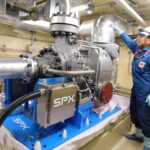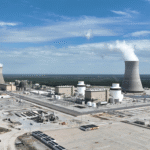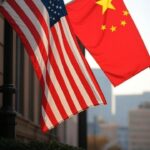Energy News Beat
Tokyo Electric Power Holdings is accelerating preparations for the restart of the Kashiwazaki-Kariwa nuclear power station in Niigata Prefecture. In the face of escalating fuel costs, restarting nuclear power stations is deemed crucial to stabilizing performance and maintaining a stable power supply. This move holds significant importance for the country’s energy policy as it strives for a decarbonized society.
However, the Kashiwazaki-Kariwa power station, initially scheduled for operation in 2023, faces an uncertain path. That is due to a prohibition on operations resulting from counterterrorism deficiencies.
Responsible Counterterrorism Measures
”Good morning. I’m XXX.” After stating their name and displaying their ID card next to their face, employees seek approval from security personnel before proceeding to the biometric authentication gate.
Kashiwazaki-Kariwa boasts the world’s highest energy output. There are over 5,000 people working on a site equivalent to more than 90 Tokyo Domes. To deter potential terrorist threats, multiple checks are conducted during entry and exit.
Despite the time-consuming process, there is a growing acknowledgment onsite that proving one’s identity is a responsibility.
The No 6 and 7 reactors also passed the Nuclear Regulation Authority’s review for restarting. However, in 2021, a series of security flaws related to counterterrorism were discovered. They led to a de facto operating ban. Additional inspections are ongoing.
Hope and Preparations
The current situation leaves the power supply system for the Tokyo metropolitan area less than fully secure.
Driven by an increase in electricity rates, TEPCO anticipates a final shift to profitability this fiscal year 2023. However, that projection relied on the assumption of restarting the No 7 reactor in October. With rising costs in thermal power generation, failure to implement another rate hike could jeopardize the company and return it to a deficit.
TEPCO is prioritizing the human element in preparation for a restart. Its workforce with operational experience on No 6 and 7 reactors has been reduced by about half. The company is intensifying educational initiatives, including accident response training using simulators. It has also arranged visits to operational thermal power plants.
Communications within the facility are now more vibrant. Since August 2022, Managing Executive Officer Takeyuki Inagaki has consistently sent handwritten message cards expressing gratitude to workers actively involved in regional activities. The number of recipients has surpassed 3,000.
“I won’t mention a single word about the resumption of operations until I am convinced myself,” Mr Inagaki emphasizes. He is determined to persist in such initiatives until the actions and mindset at the site undergo a complete transformation.
China’s Economic Coercion
On another front, TEPCO’s management faces a new challenge. China is strongly opposing the release of treated water from the Fukushima Daiichi Nuclear Power Station.
This opposition has disrupted the market for many exported scallops and sea cucumbers. Therefore, it is expected that the amount of compensation to fishermen for reputational damage will be higher than expected.
Restarting a single nuclear reactor can contribute to an improvement of approximately ¥120 billion JPY (about $800 million USD) in the balance. That makes the resumption crucial for many reasons. One such reason is the essential need to cover the growing costs of reputational damages afflicting the fishing industry.
Source: Japan–forward-com.cdn.ampproject.org
ENB Top News
ENB
Energy Dashboard
ENB Podcast
ENB Substack
The post Kashiwazaki-Kariwa, World’s Largest Nuclear Power Station Prepares for Restart appeared first on Energy News Beat.








